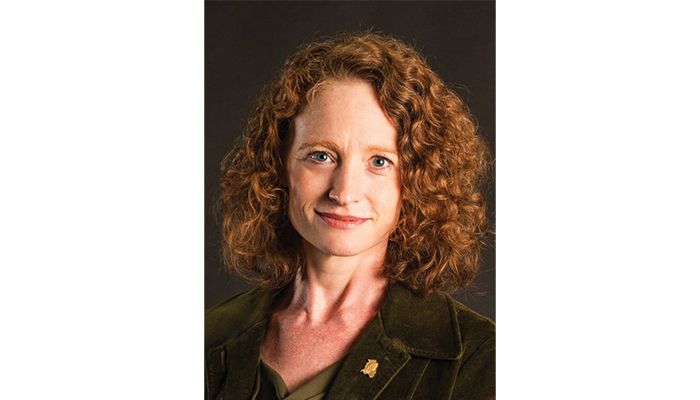Consider precision fertilizer placement
Author
Published
4/1/2024
Fine-tuning fertilizer applications helps farmers reduce input costs while becoming more environmentally friendly.
Precision fertilizer placement coupled with conservation practices such as cover crops and reduced tillage provides the opportunity for farmers to increase their financial bottom lines while maintaining yields and benefiting the environment by reducing nutrient usage in their operation.
That was the message from a panel of farmers and experts at Commodity Classic 2024 in Houston Feb. 29, who said there is a balance between maximizing yields, timing of nutrient applications and the amount of fertilizer needed to realize the best rate of return from a field.
Focusing on water quality and soil health with conservation practices such as cover crops, strip tilling, bioreactors or buffer strips in tandem with precision fertilizer applications is beneficial for the environment.
“All of us address the environmental concerns that farming does have, but we can do better,” said Laura Gentry, director of water quality science with the Illinois Corn Growers Association, adjunct professor at the University of Illinois and member of the leadership team with the Precision Conservation Management (PCM) program, whose goal is to combine precision technology with data management, farm business and financials to help farmers manage, adopt and adapt conservation practices long term and improve on-farm decision making.
“We help farmers identify how (fertilizer management, tillage and cover crops) could help them with their financial bottom line, but also with their environmental outcomes or assessment.”
It’s an important concept, Gentry noted, as efforts have ramped up over the past decade through statewide initiatives such as the Iowa Nutrient Reduction Strategy and similar efforts in adjoining states to reduce nitrogen and fertilizer losses to drinking water and the Gulf of Mexico.
For example, a study from PCM found that farmers could be utilizing more fertilizer in an effort to boost yields but aren’t maximizing profits because of their higher input costs.
They may see more bushels per acre, “but they’re not doing it at a profit,” Gentry said. “They are actually losing money to produce a few extra bushels of corn.”

Pictured above: Laura Gentry
On the farm
Farmers are becoming engaged in conservation practices across the country as they look to do their part to build soil health and improve water quality.
Mark Schleisman, an Iowa farmer and Farm Bureau member from Calhoun County near Lake City, farms with his father, sons, daughter and son-in-law. They have implemented grid sampling and yield monitoring to track their inputs more efficiently.
“About 10 to 12 years ago, a lot of the information we were gathering was from yield monitors; kind of nice to look at. But now we’re managing by that,” Schleisman said. “The biggest nutrient that we manage is probably nitrogen.
“We’re in the Raccoon River Valley. All of (the region’s) farms drain into the Raccoon watershed, which is the watershed that supplies Des Moines with drinking water. We’re really focused on trying to manage nitrogen applications.”
Most of the phosphorous and nitrogen comes from manure generated from their hog operation, Schleisman said, but they also split-apply nitrogen as needed, mostly in-season.
“We’re really trying to dial that in, reduce the quantity that we’re using and make it more timely, to waste less,” he explained. They utilize variable rate lime and dry fertilizer applications as well as corn, popcorn and soybean seeding rates.
Andy Jobman, a farmer from Gothenburg, Nebraska, said he introduced precision crop nutrition management into his operation five to six years ago. A plethora of solutions have included grid sampling and more in-season fertilizer applications, which have reduced expenses and inputs applied on the farm.
“We’ve found some really nice efficiencies,” he said.
Gentry said PCM research has determined that nutrient application timing can yield different results. The highest yields may come from fall application of nutrients, but it’s also the costliest, such as likely having to include a stabilizer that isn’t necessary in-season.
“Who’s doing it better? It’s the farmers who don’t have the highest yields but they have the lowest costs,” Gentry said. “It’s a significantly higher net return.”
Advice from the farm
There’s no doubt the main benefits to precision application of fertilizer are reduced cost and improved water quality, the panel said, by putting nutrients exactly where needed and when.
“We’ve definitely measured the benefit of less nitrogen in the groundwater,” added Schleisman. Utilizing cover crops and strip till has reduced stream nitrate levels by 50% on average, he said.
Jobman said farmers considering conservation measures that include precision fertilizer application should have clear goals in mind. “You can’t go out there and master it all,” he said. Identify a practice that makes sense on your individual farm, such as reduced nitrogen use or reduced tillage, and then review the data.
Schleisman said also know what you already have. “Getting those grid samples together, don’t manage every field the same because they’re going to be different. Get new soil samples, and tweak your plan. It’s an immense amount of data,” he said.
“It is our responsibility as farmers and managers of our farms to be responsible in the use of the natural resources. We need to not only protect them but improve them to ensure productivity into the future for future generations.”
Kelly Robertson, soil fertility and precision agriculture consultant with Precision Crop Service, in Benton, Illinois, advised farmers to decide what level of management they’re willing to take on. Every field is different, and there’s no one perfect way to manage.
“What you adopt has to fit into your management style,” Robertson said. “What Andy does, Mark does or what maybe I do on my farm — management styles are totally different. These practices have to be able to fit in your management plan. Otherwise, you’re going to get frustrated quickly.”
Want more news on this topic? Farm Bureau members may subscribe for a free email news service, featuring the farm and rural topics that interest them most!